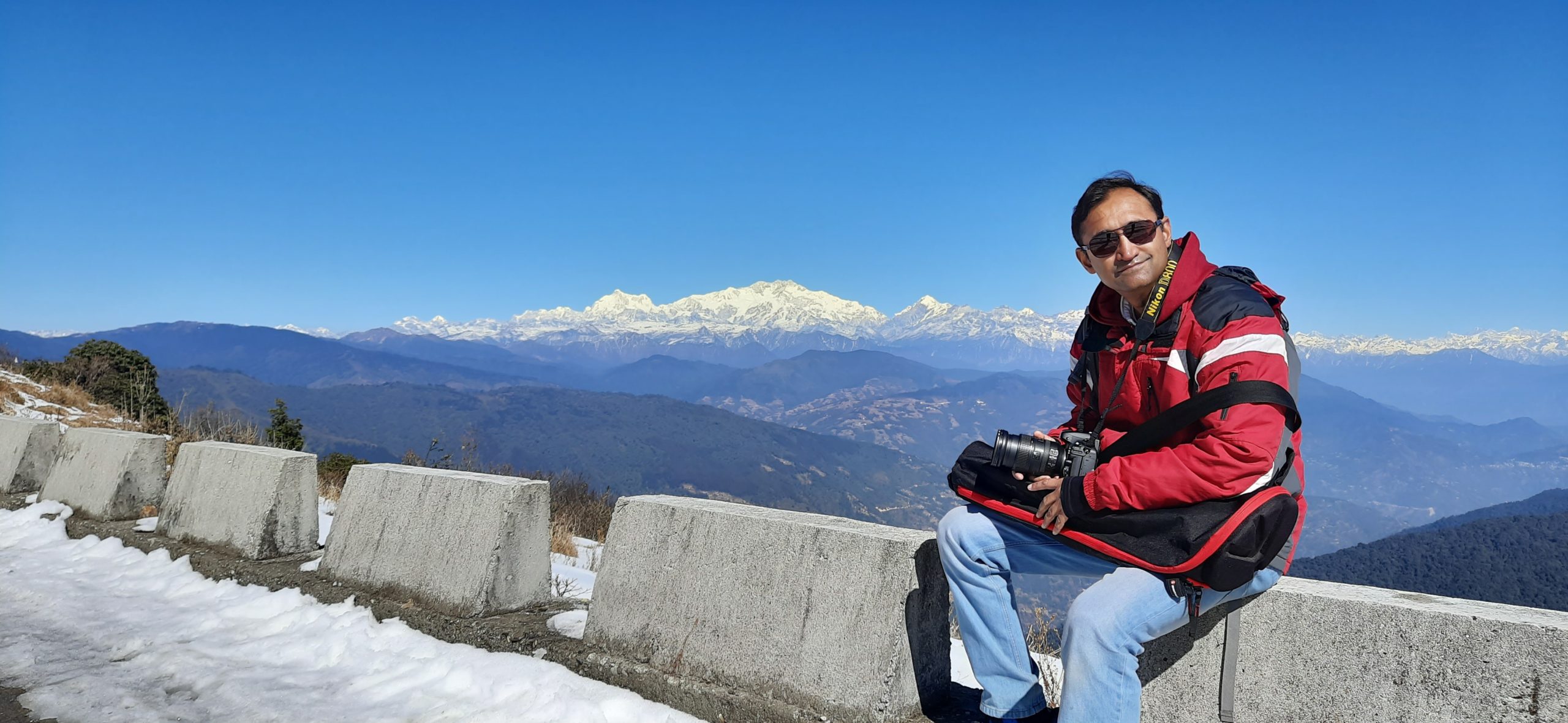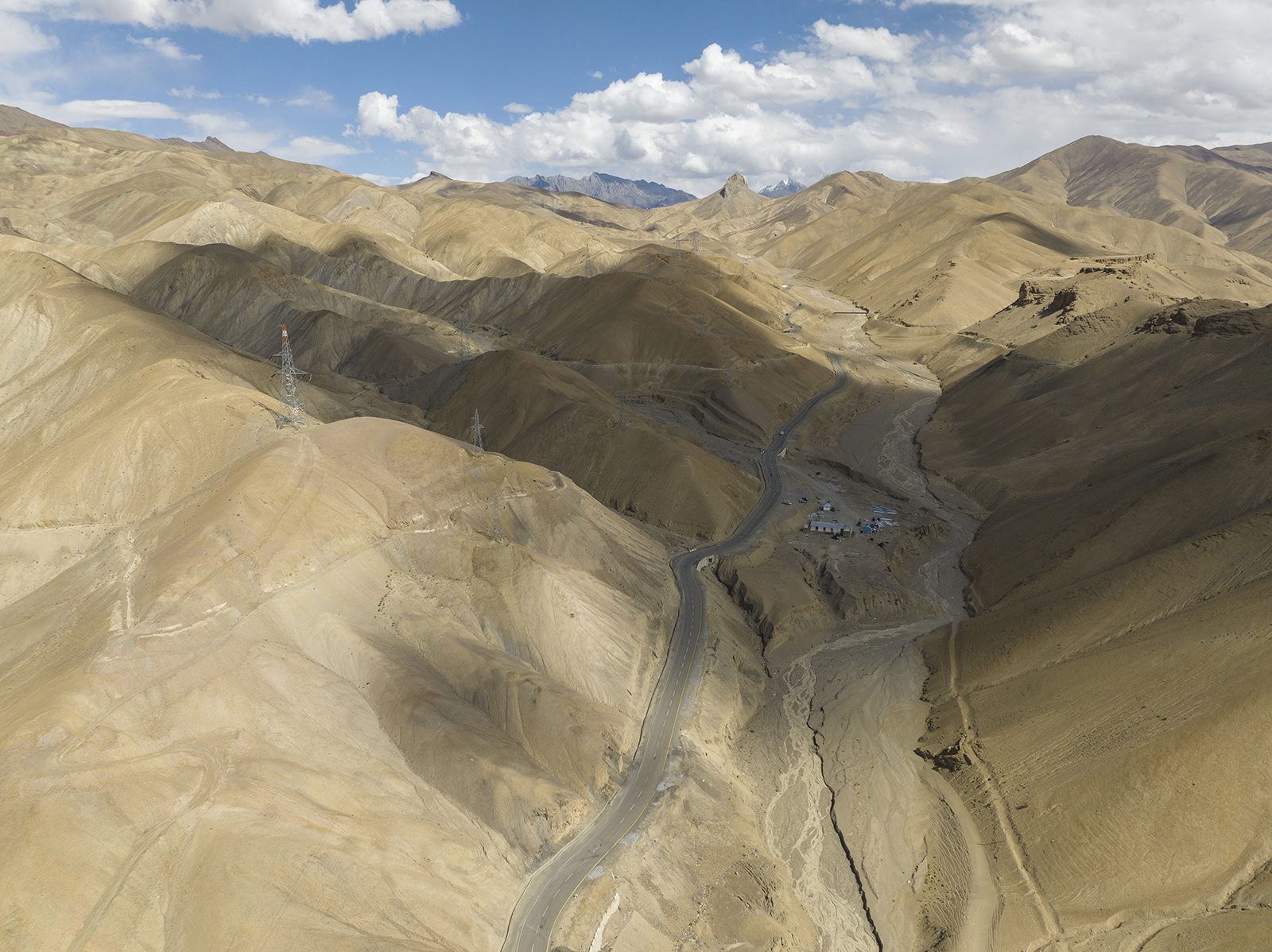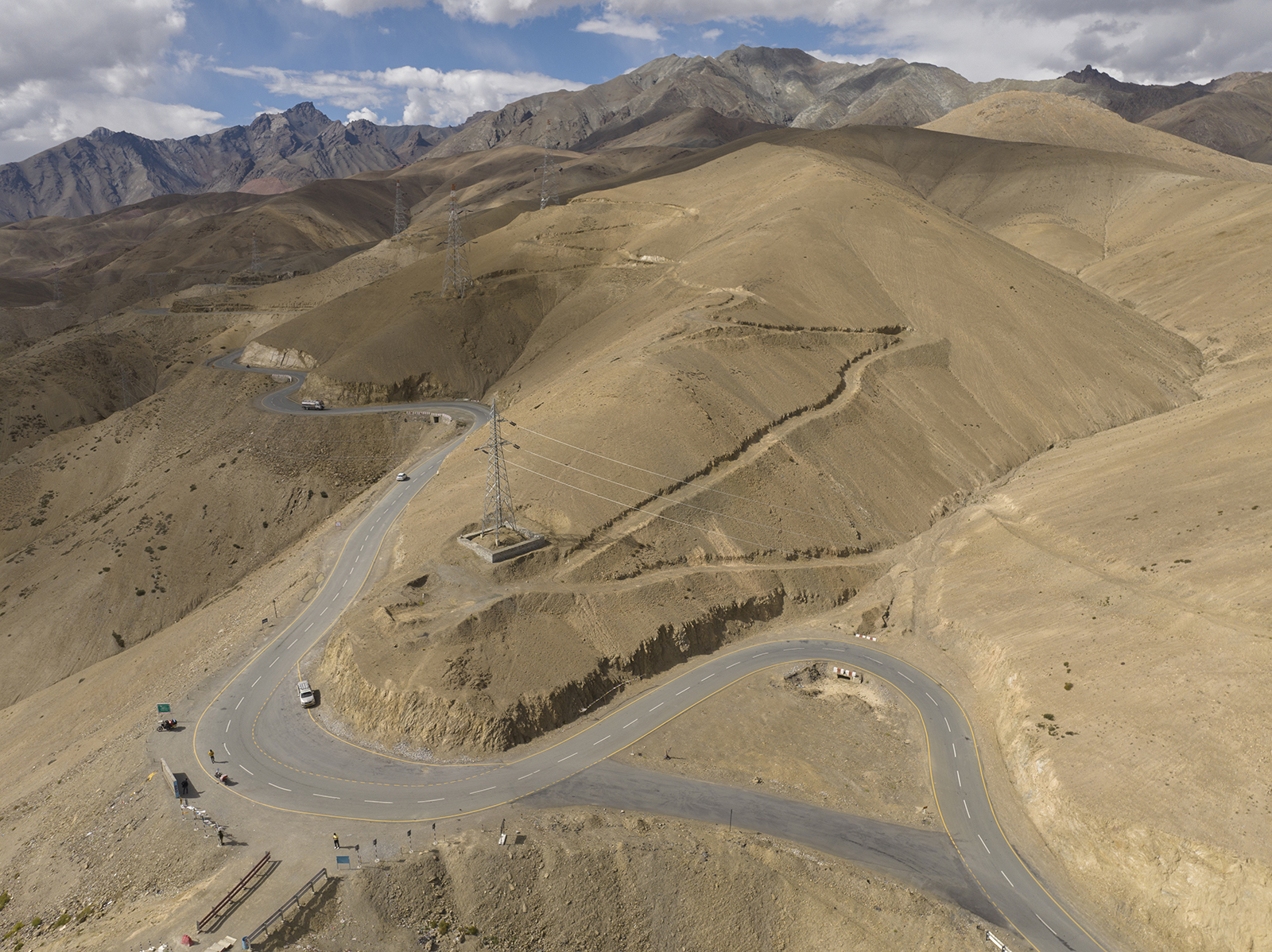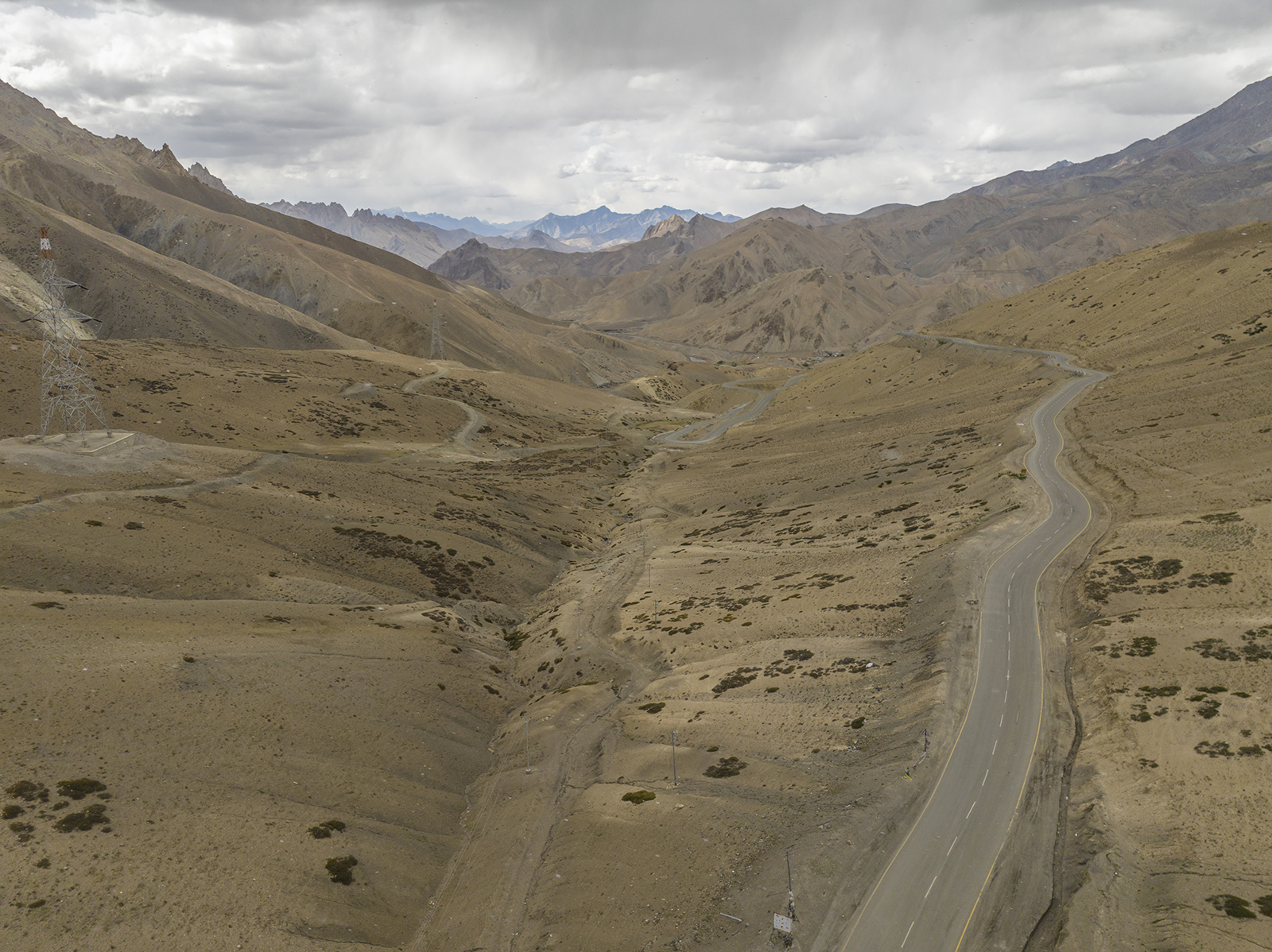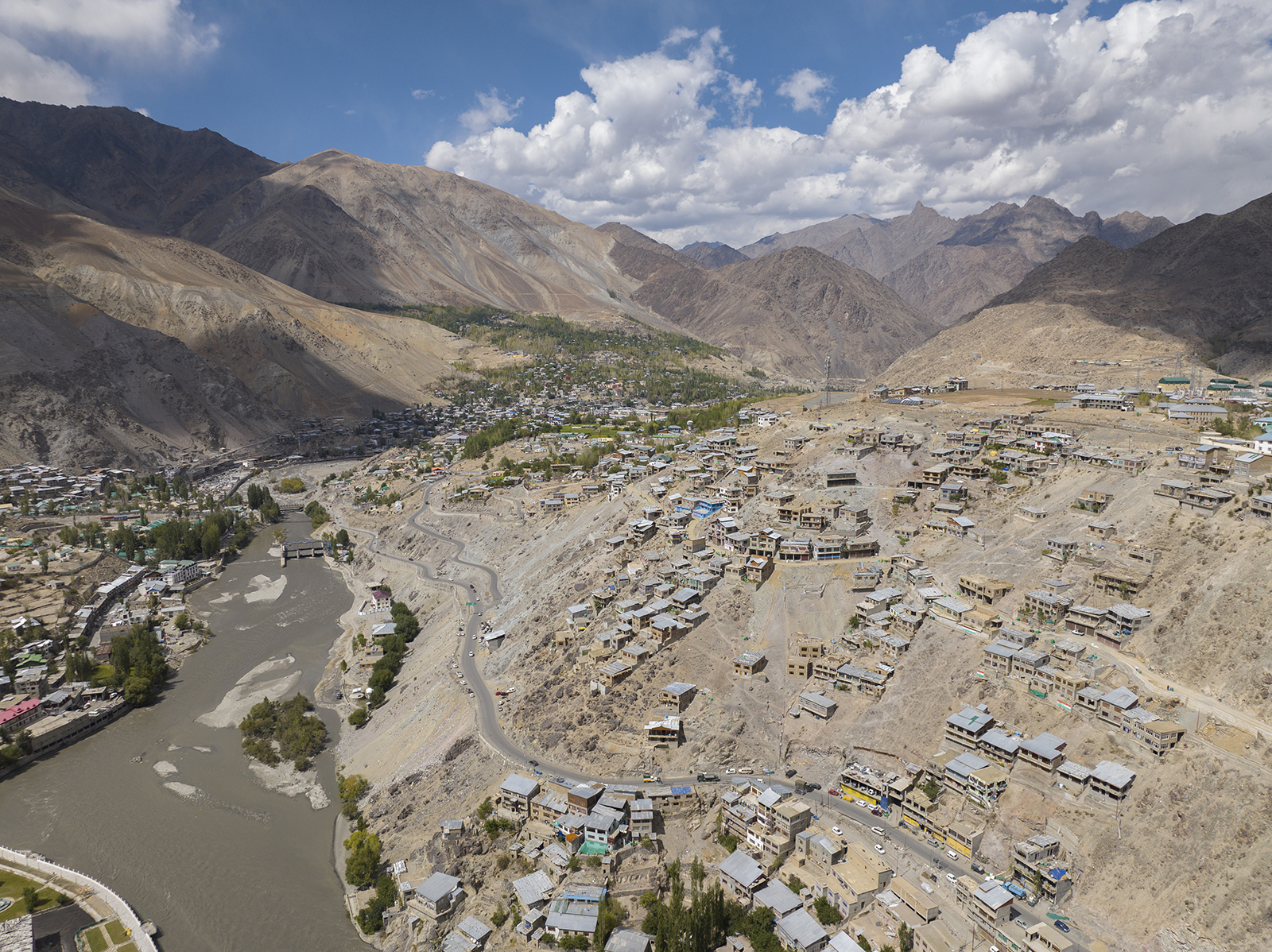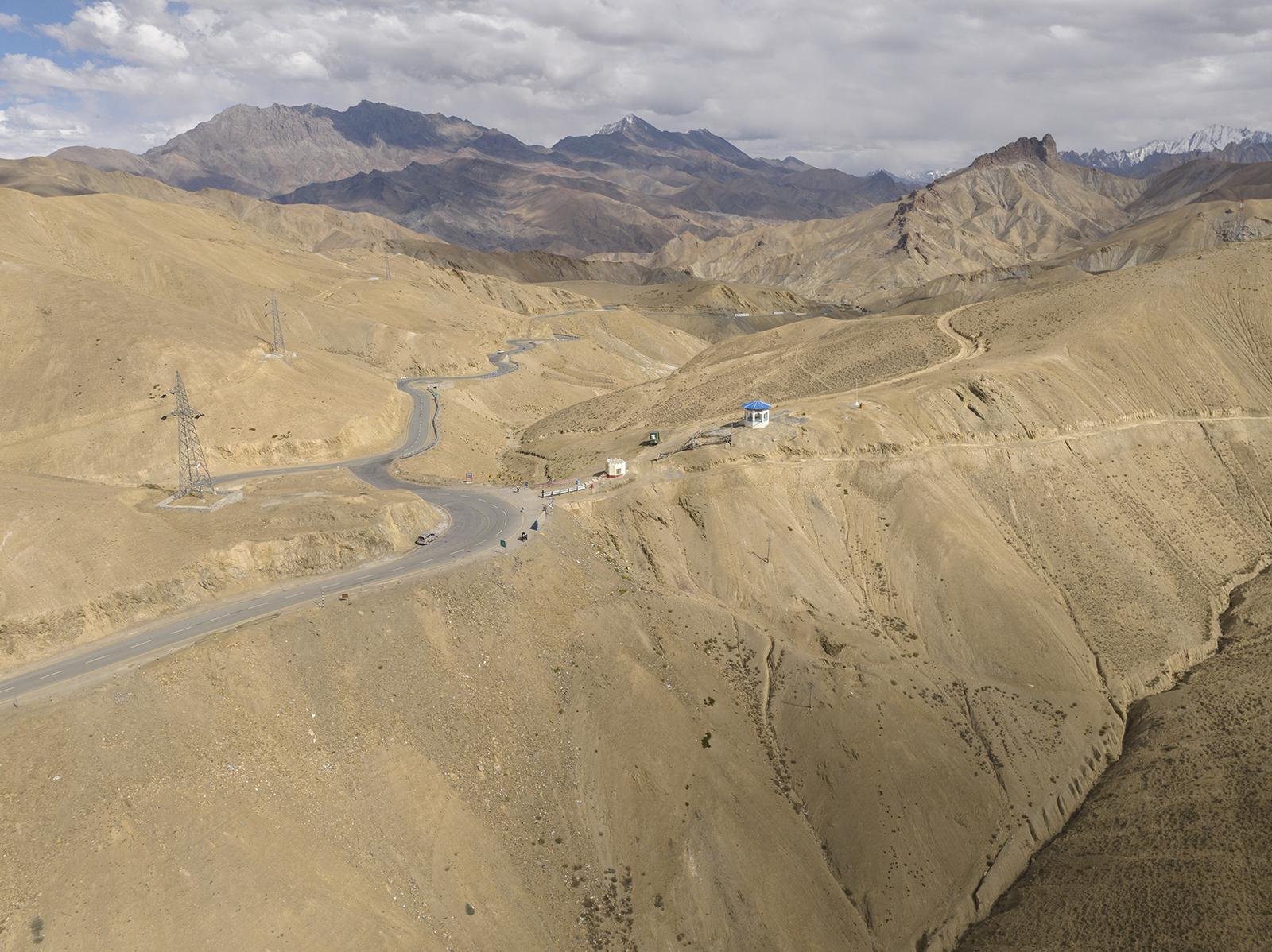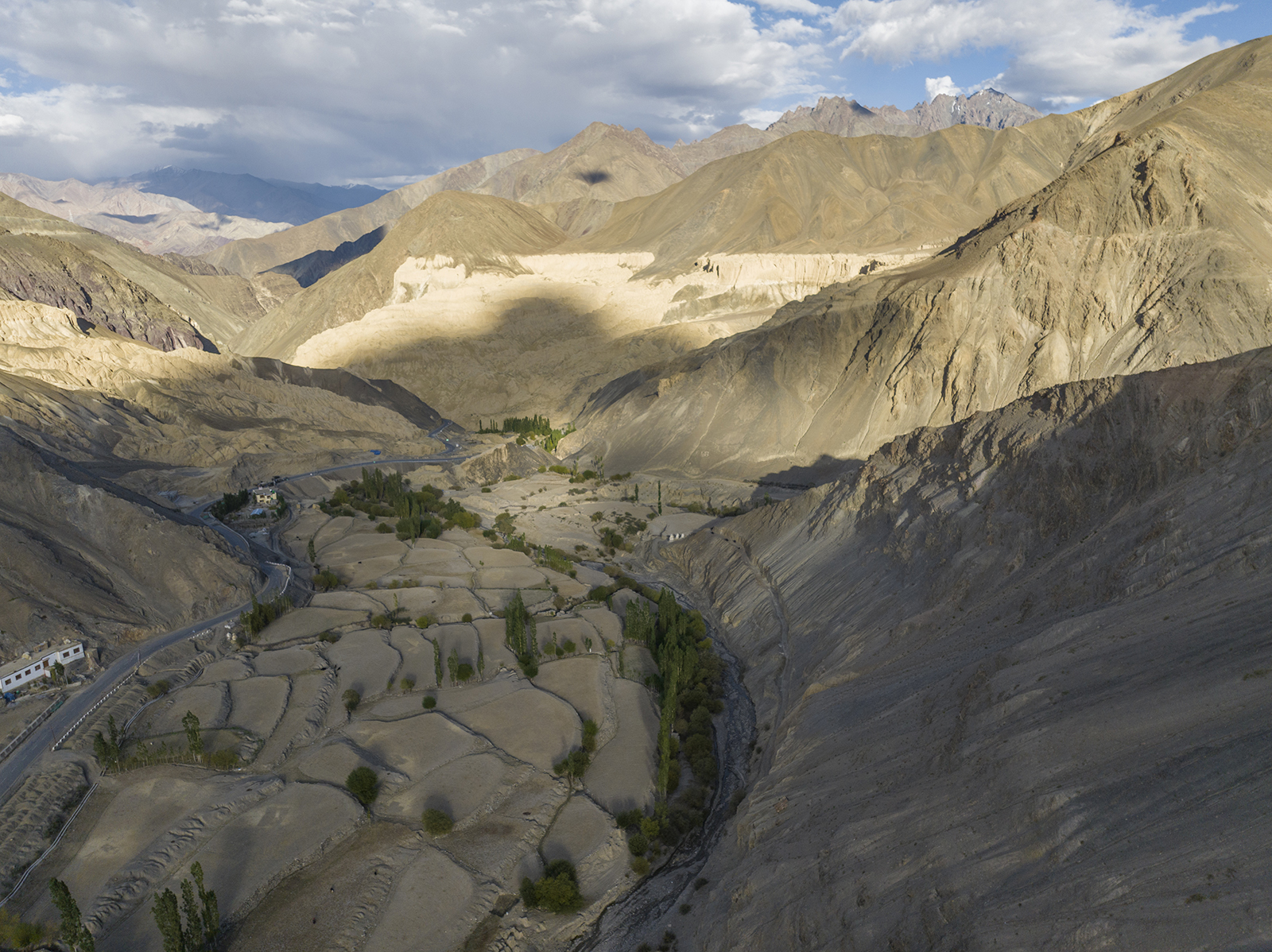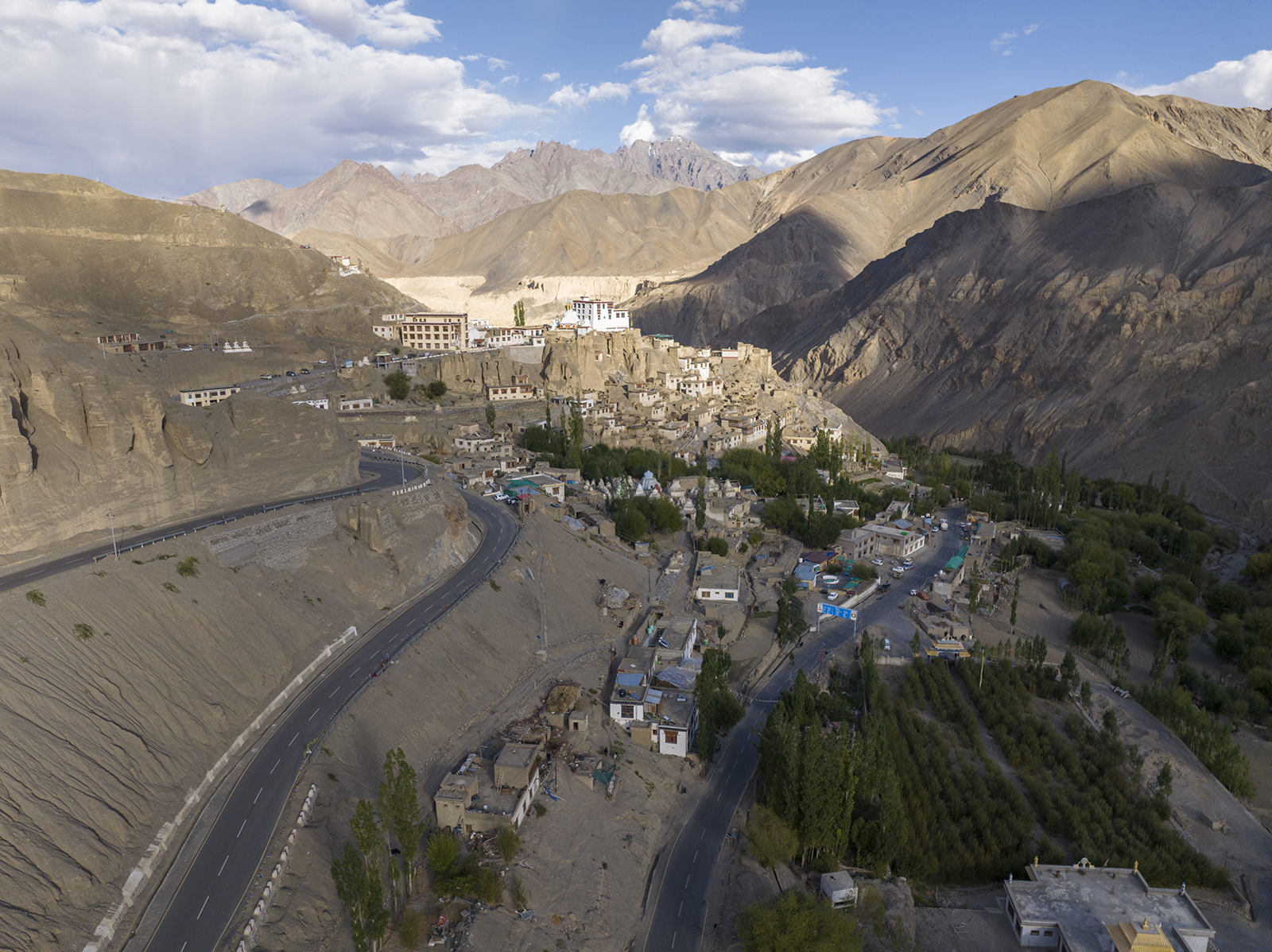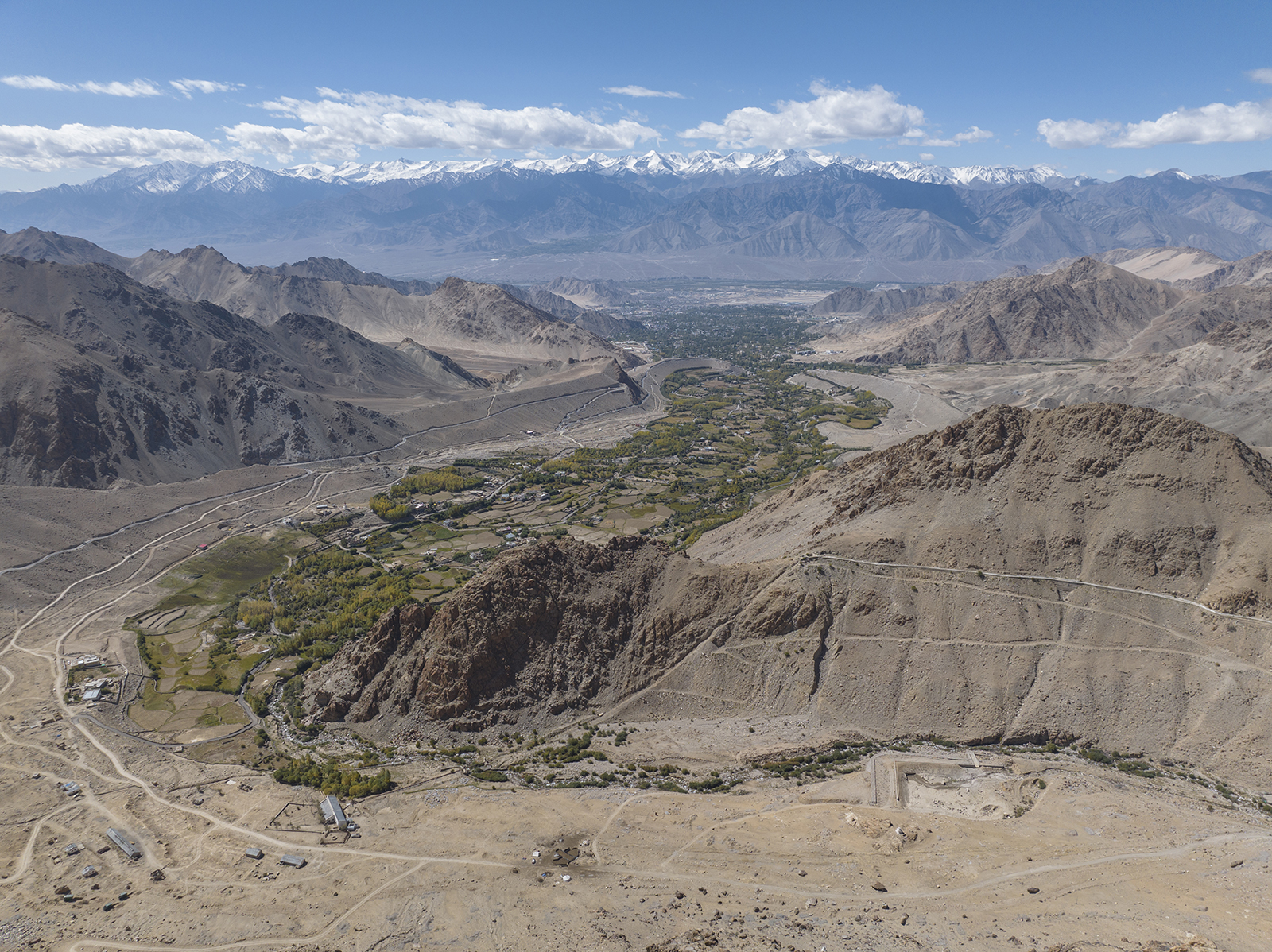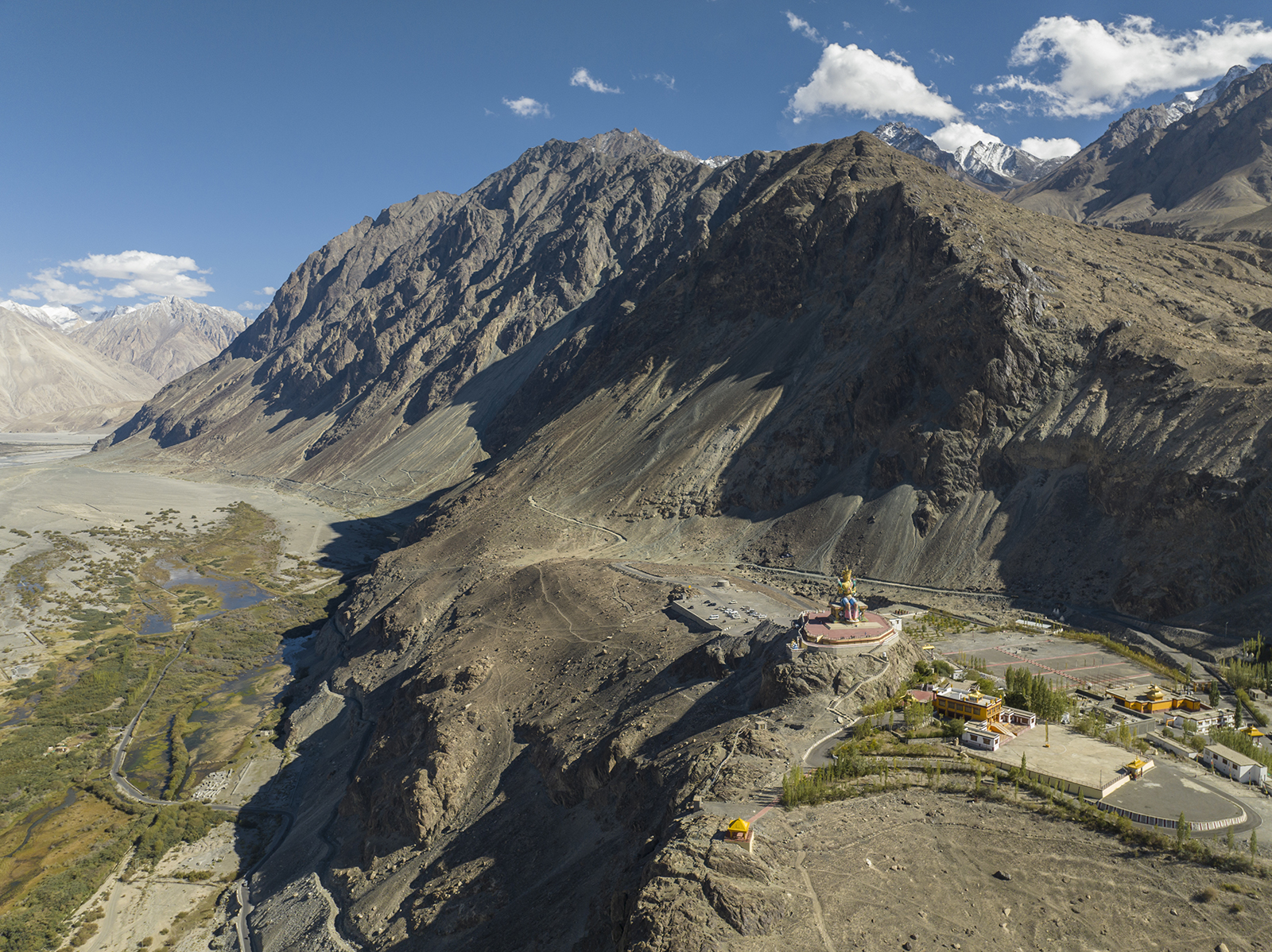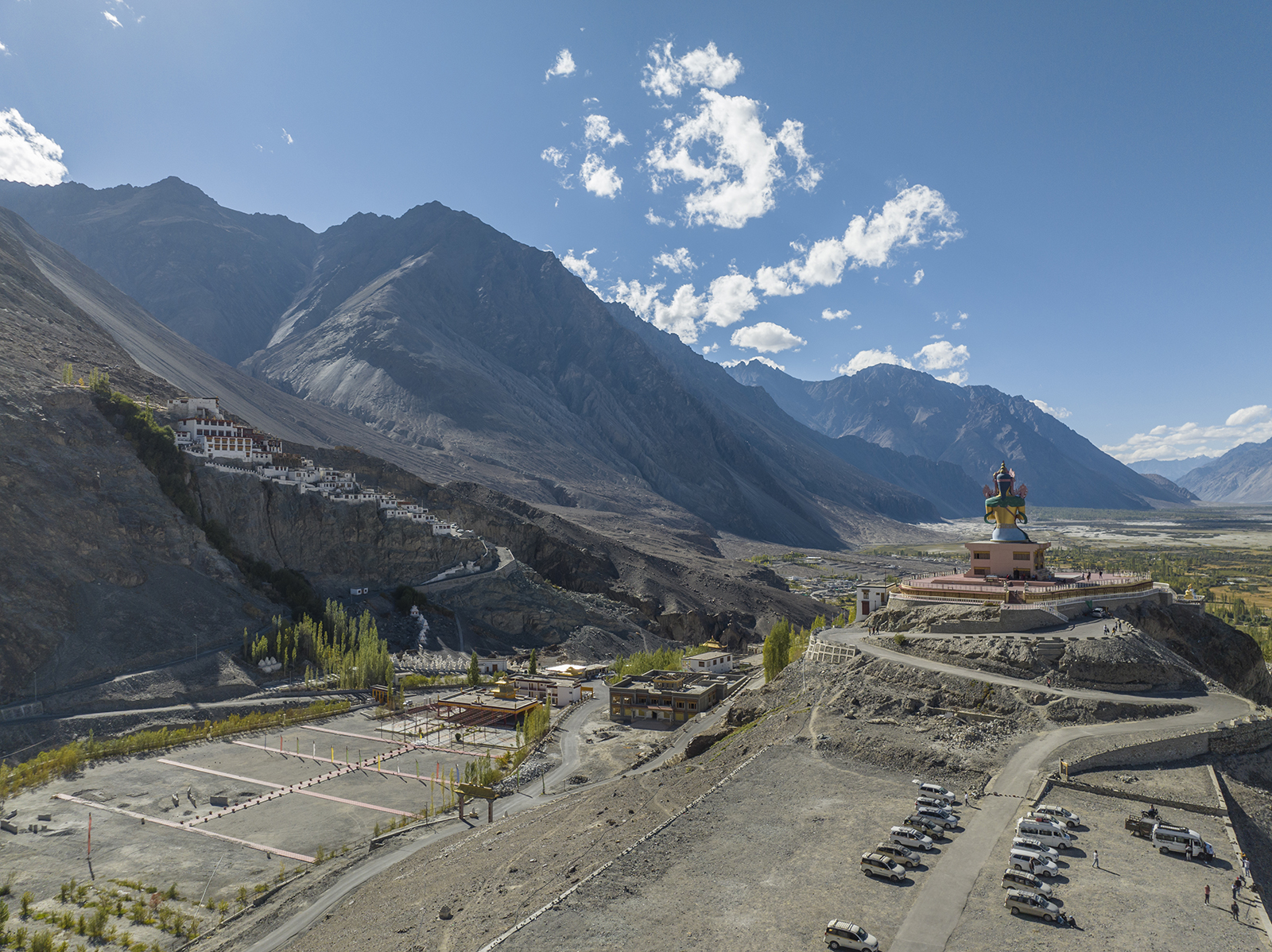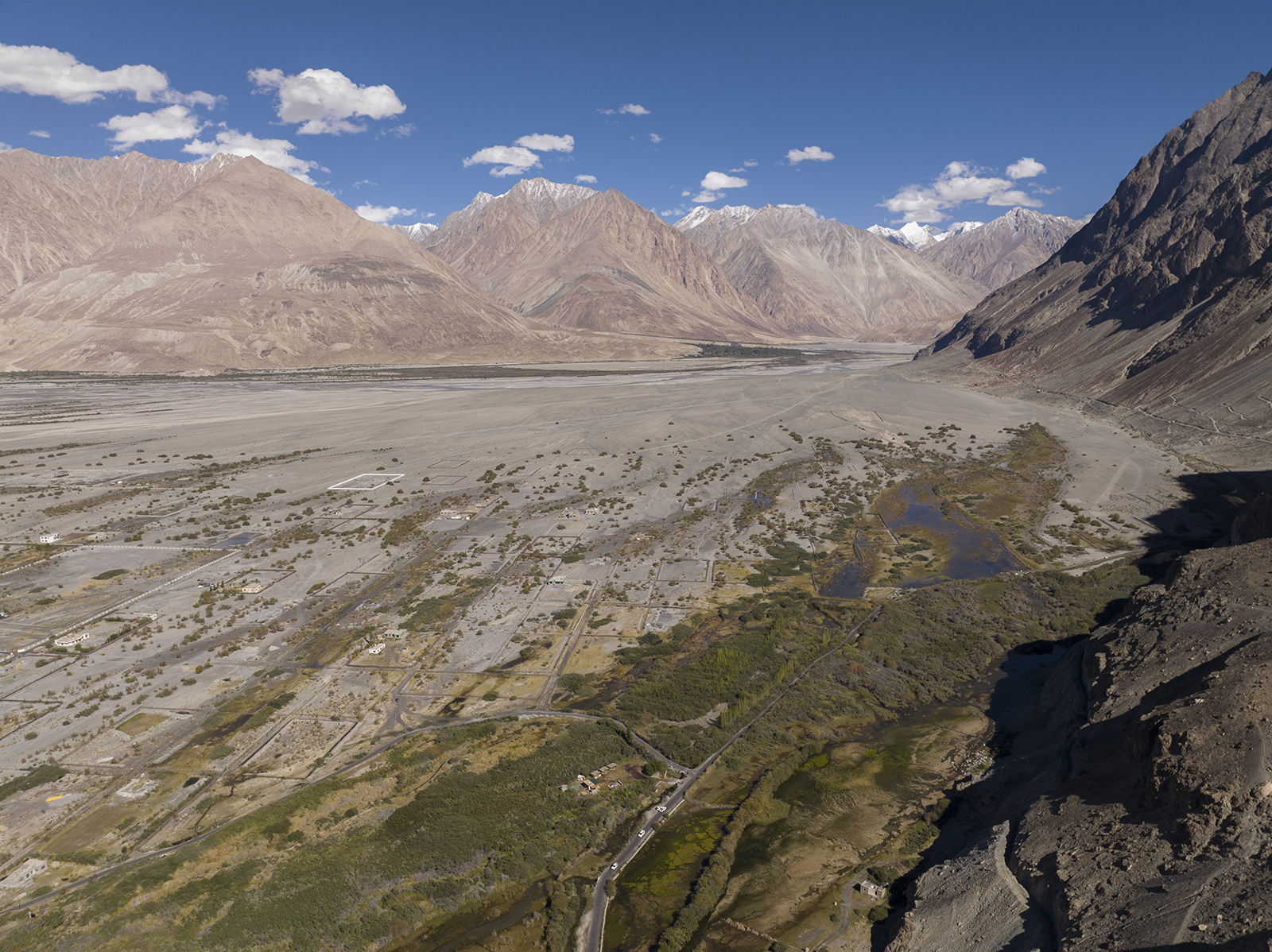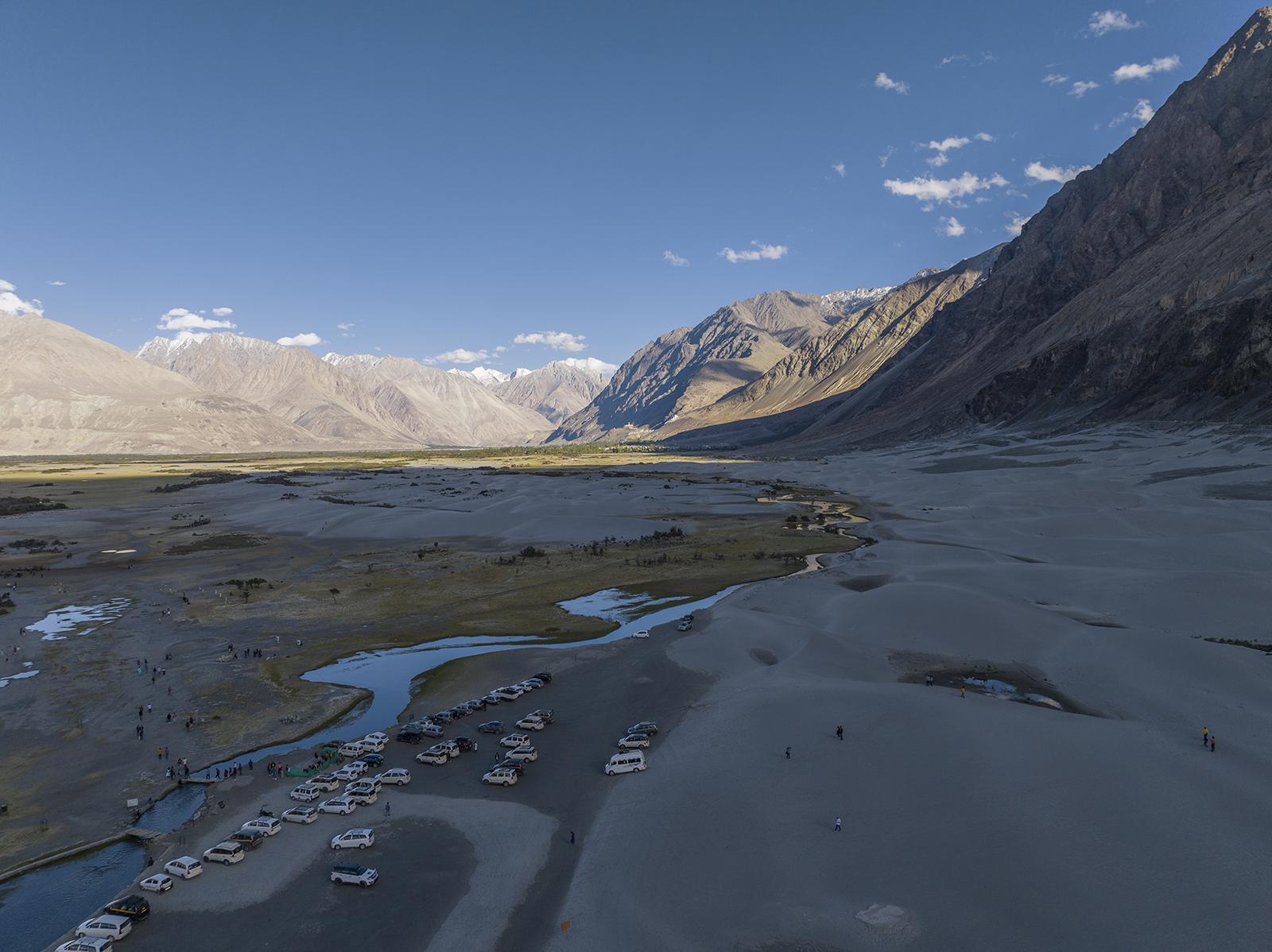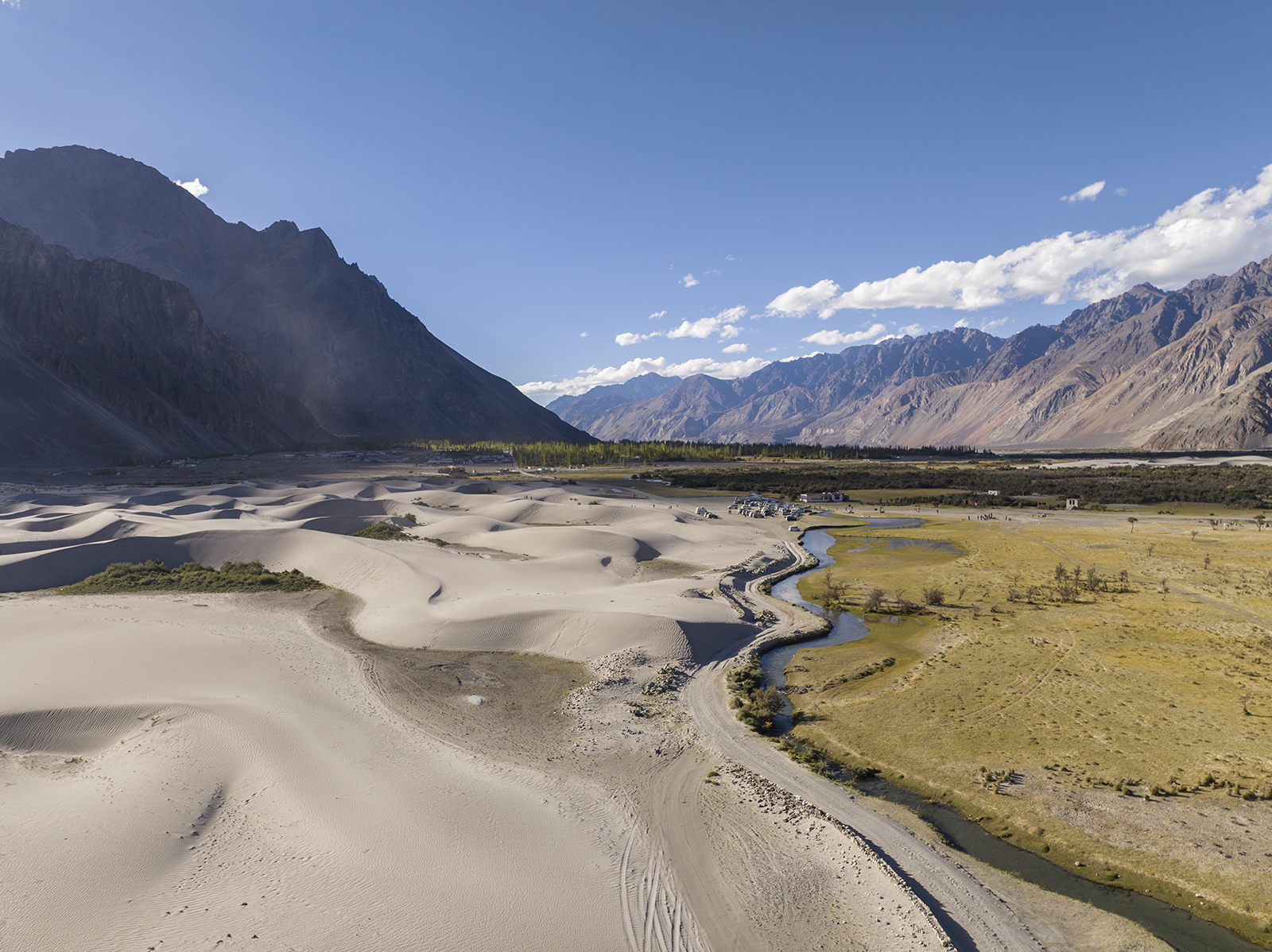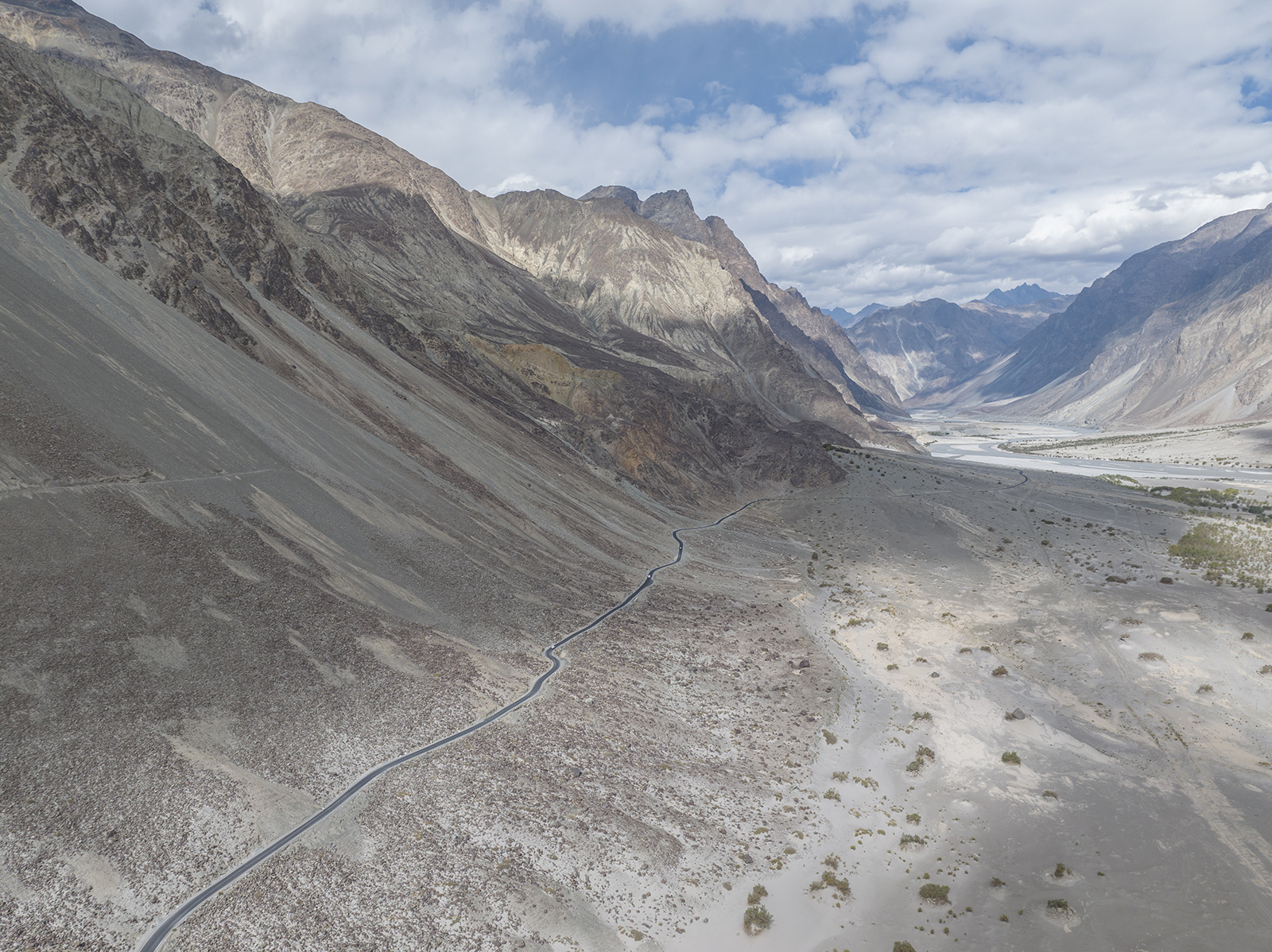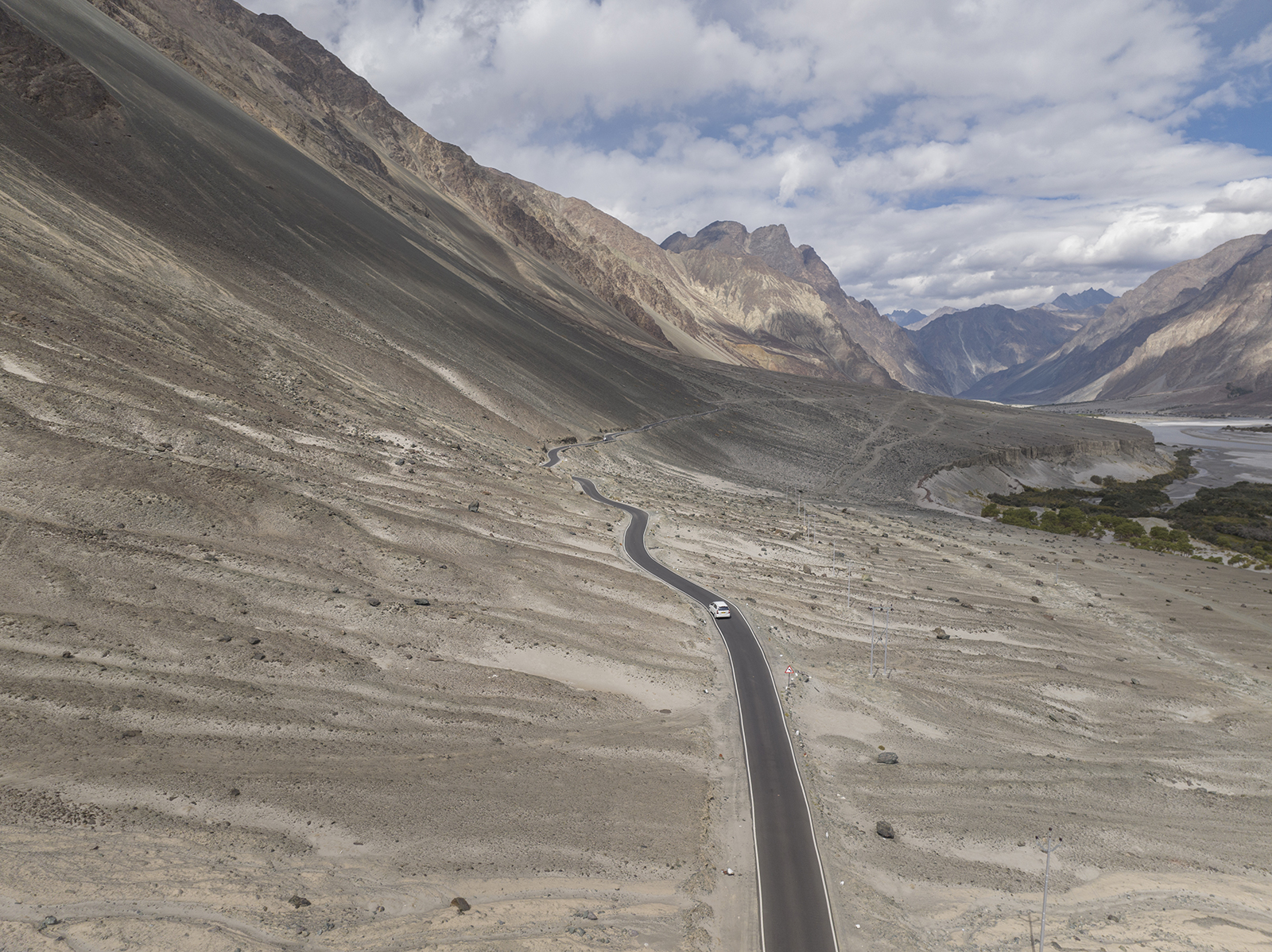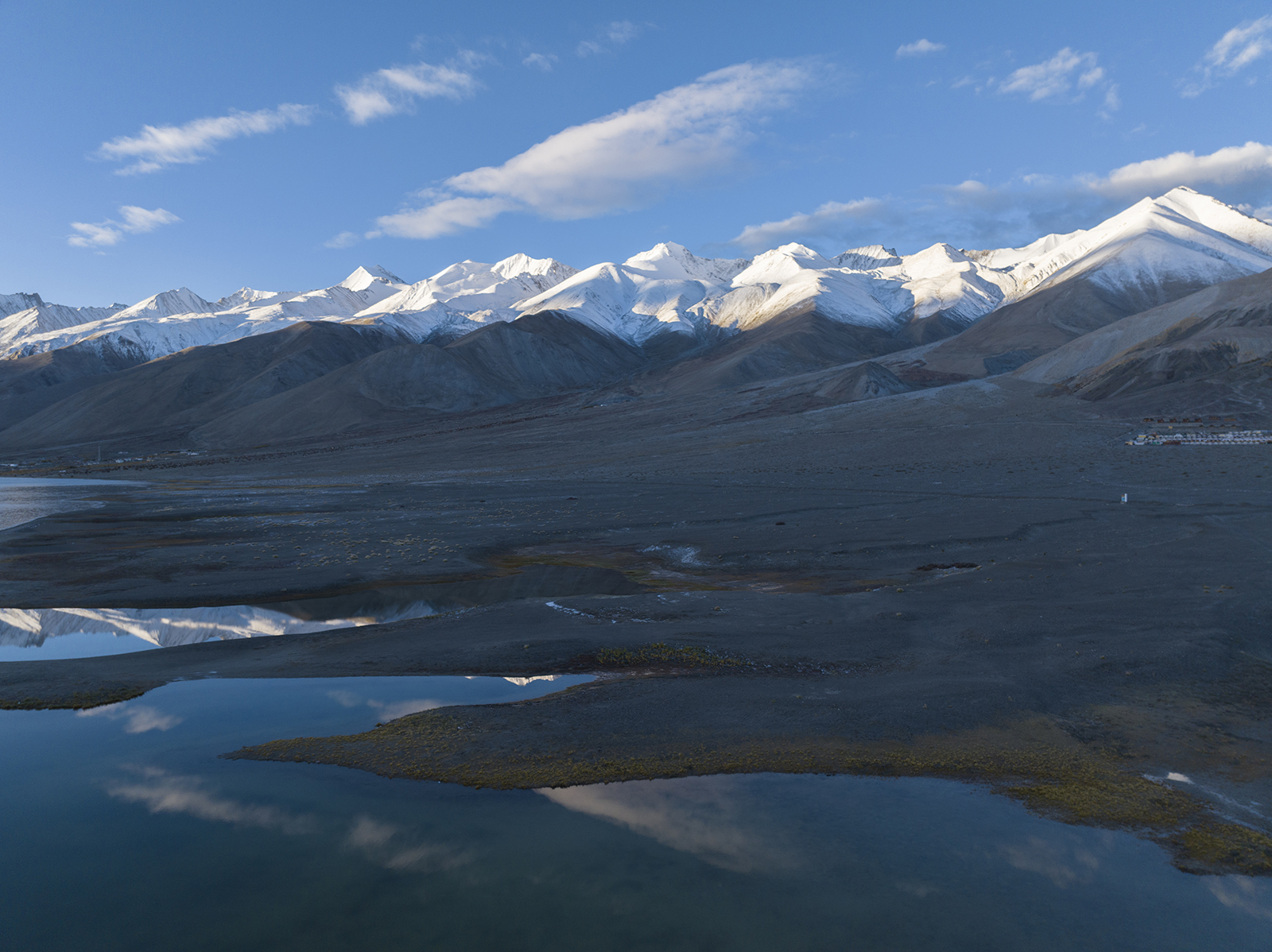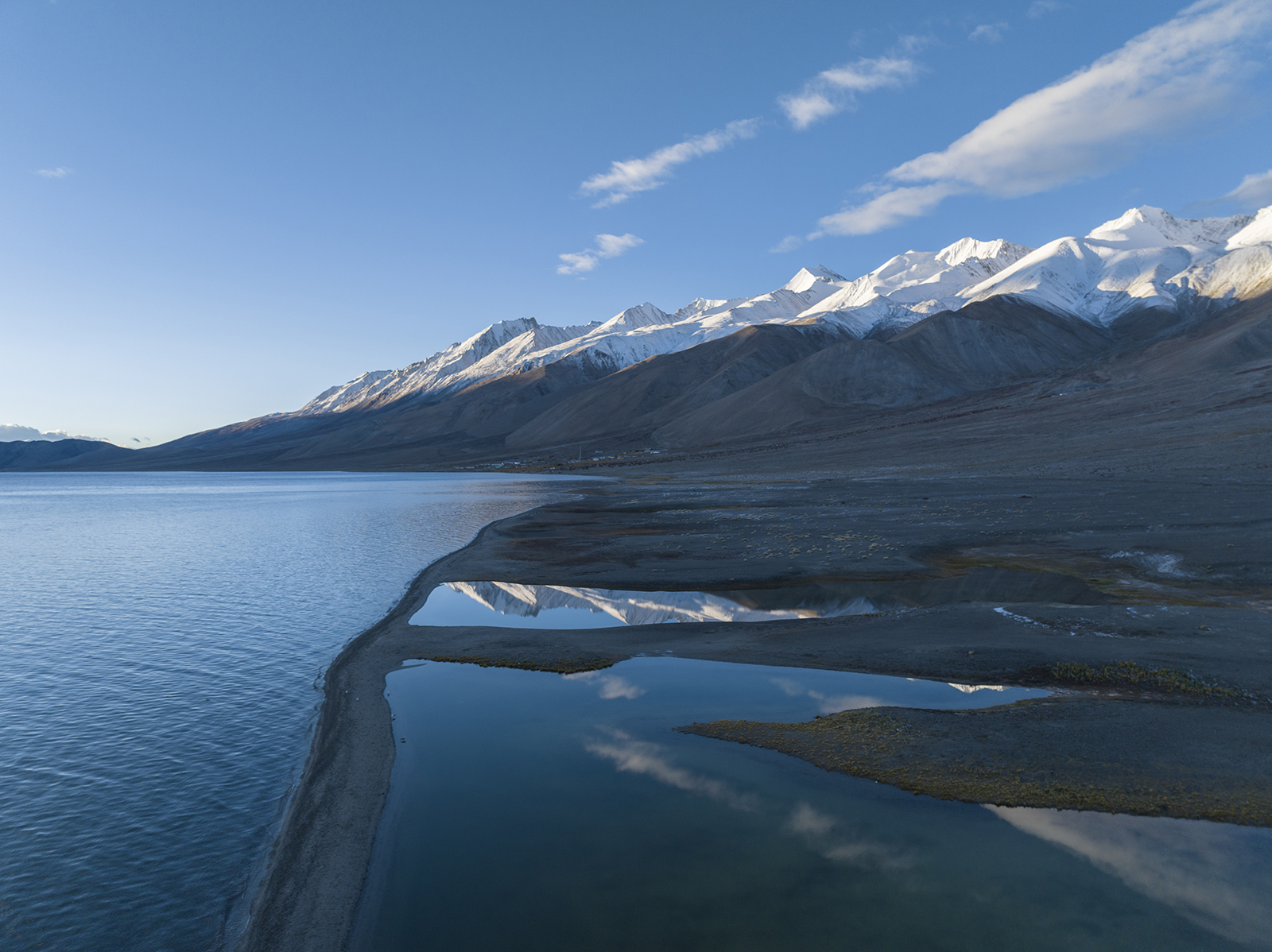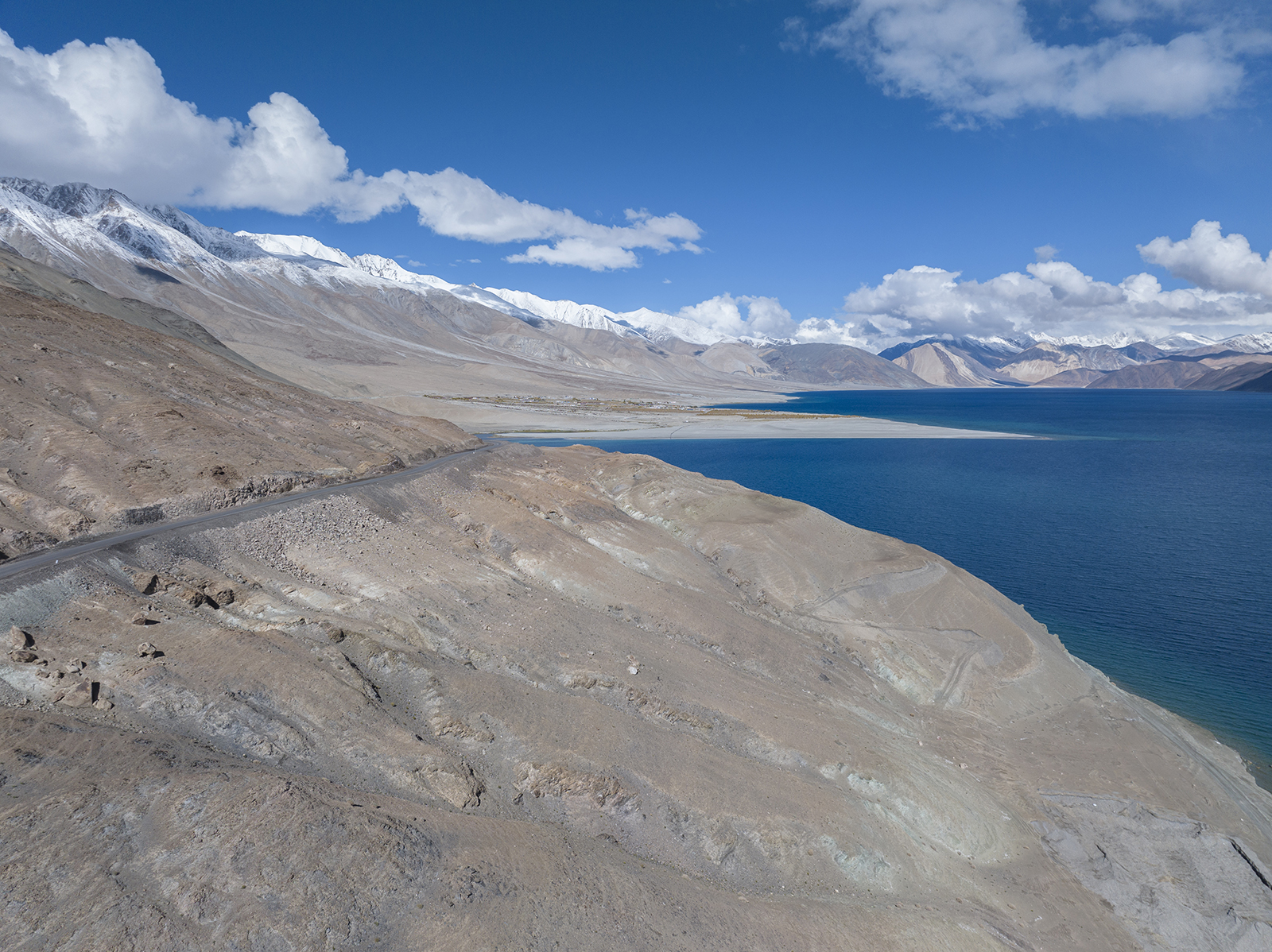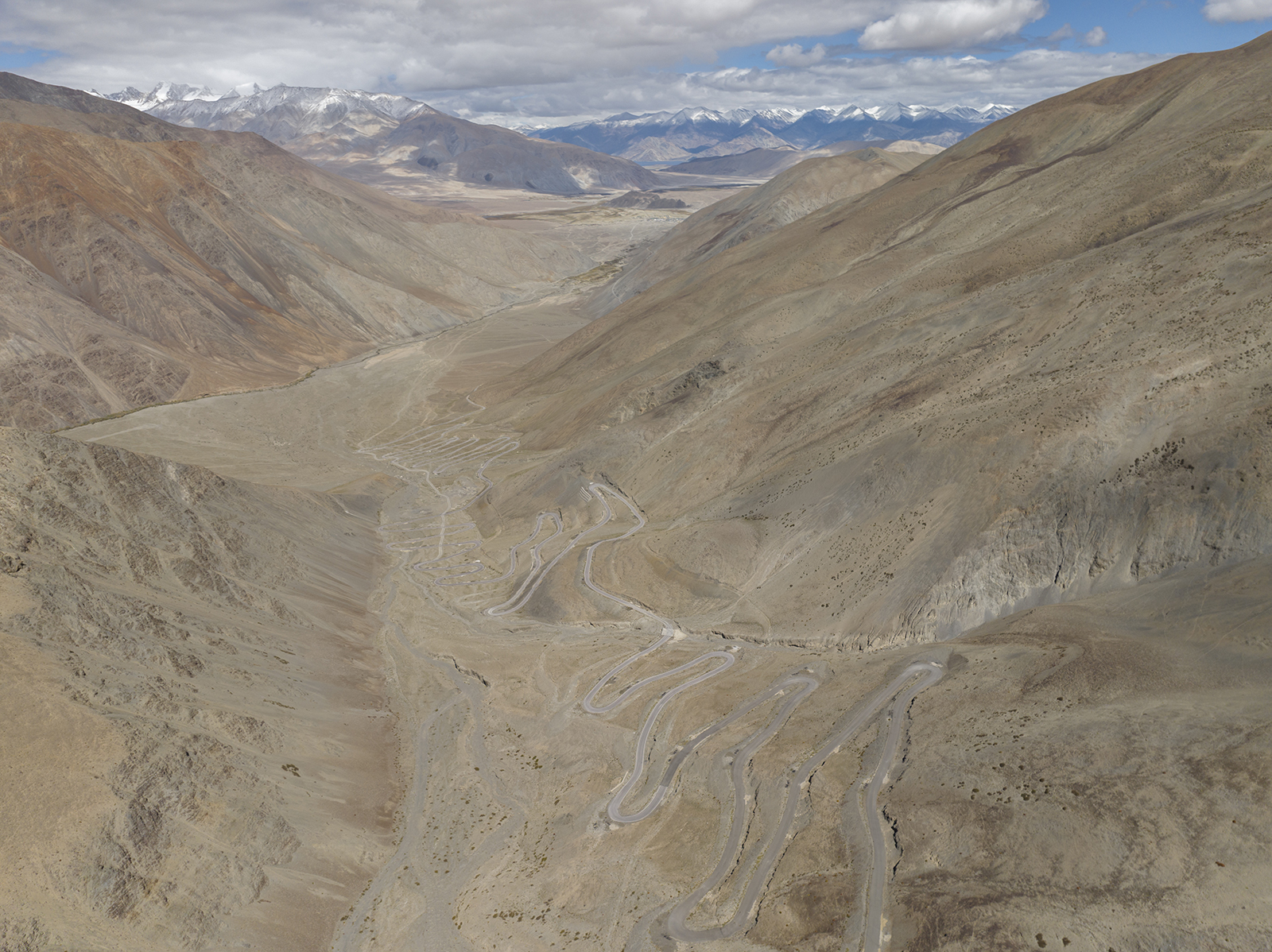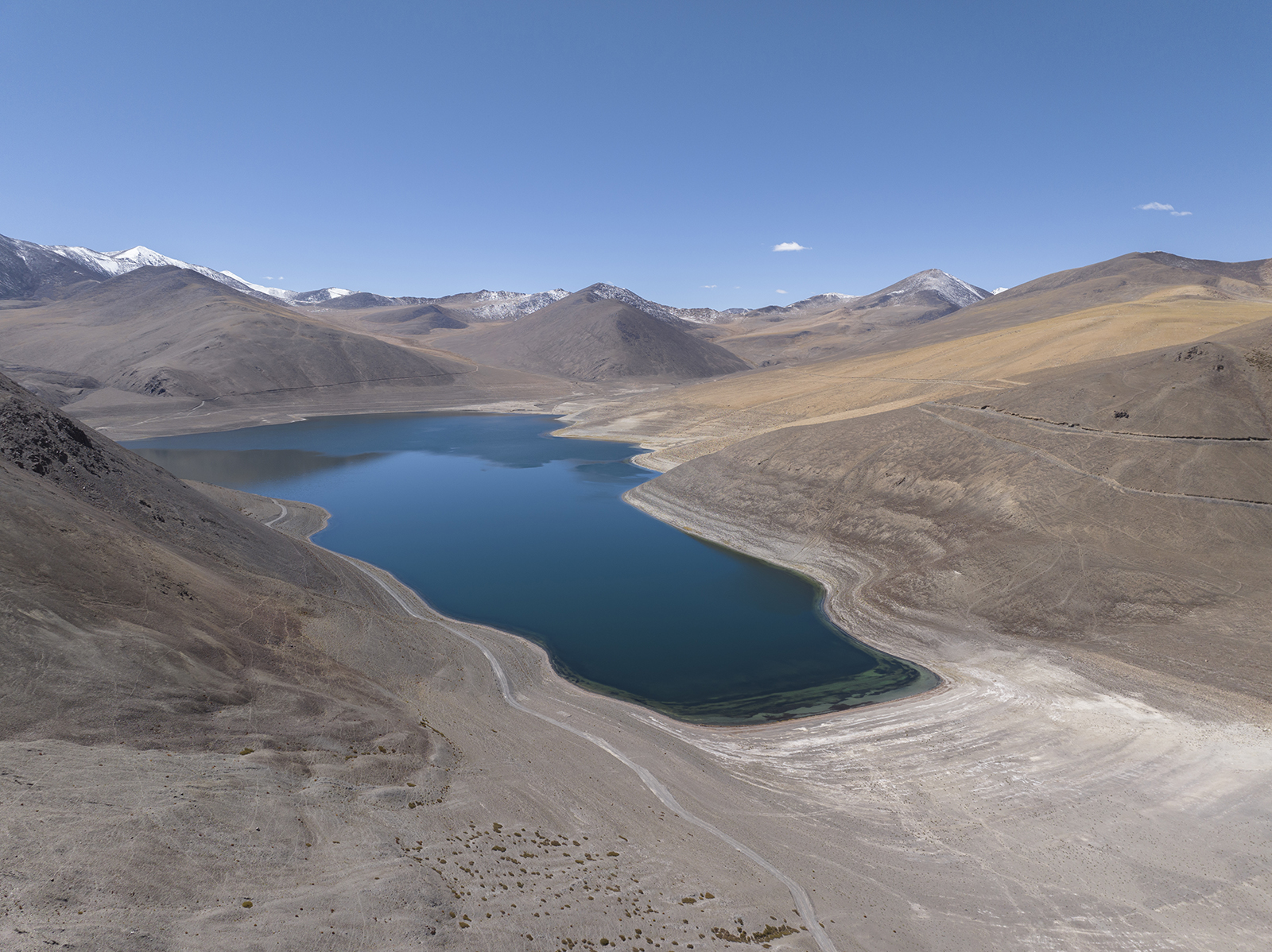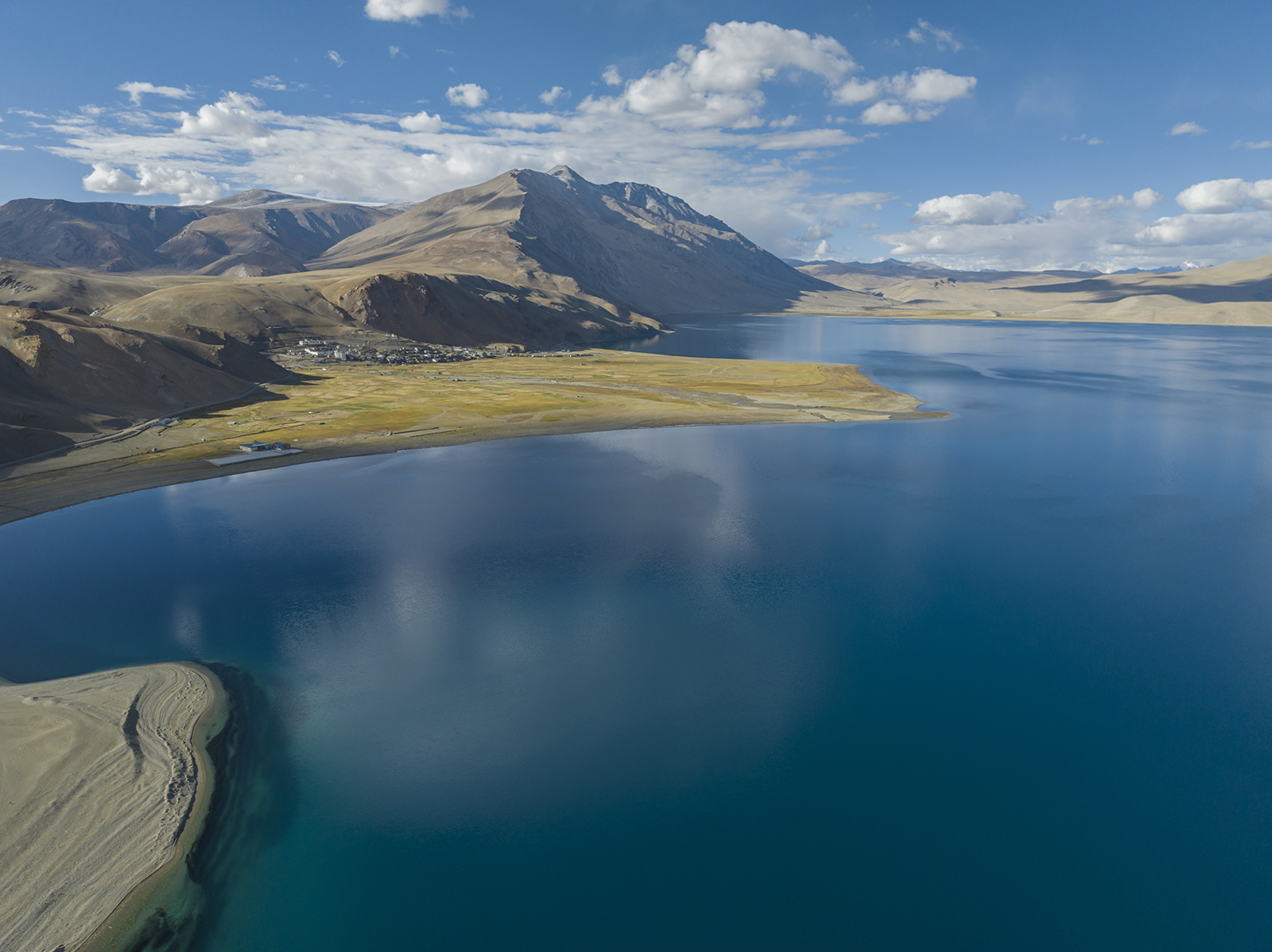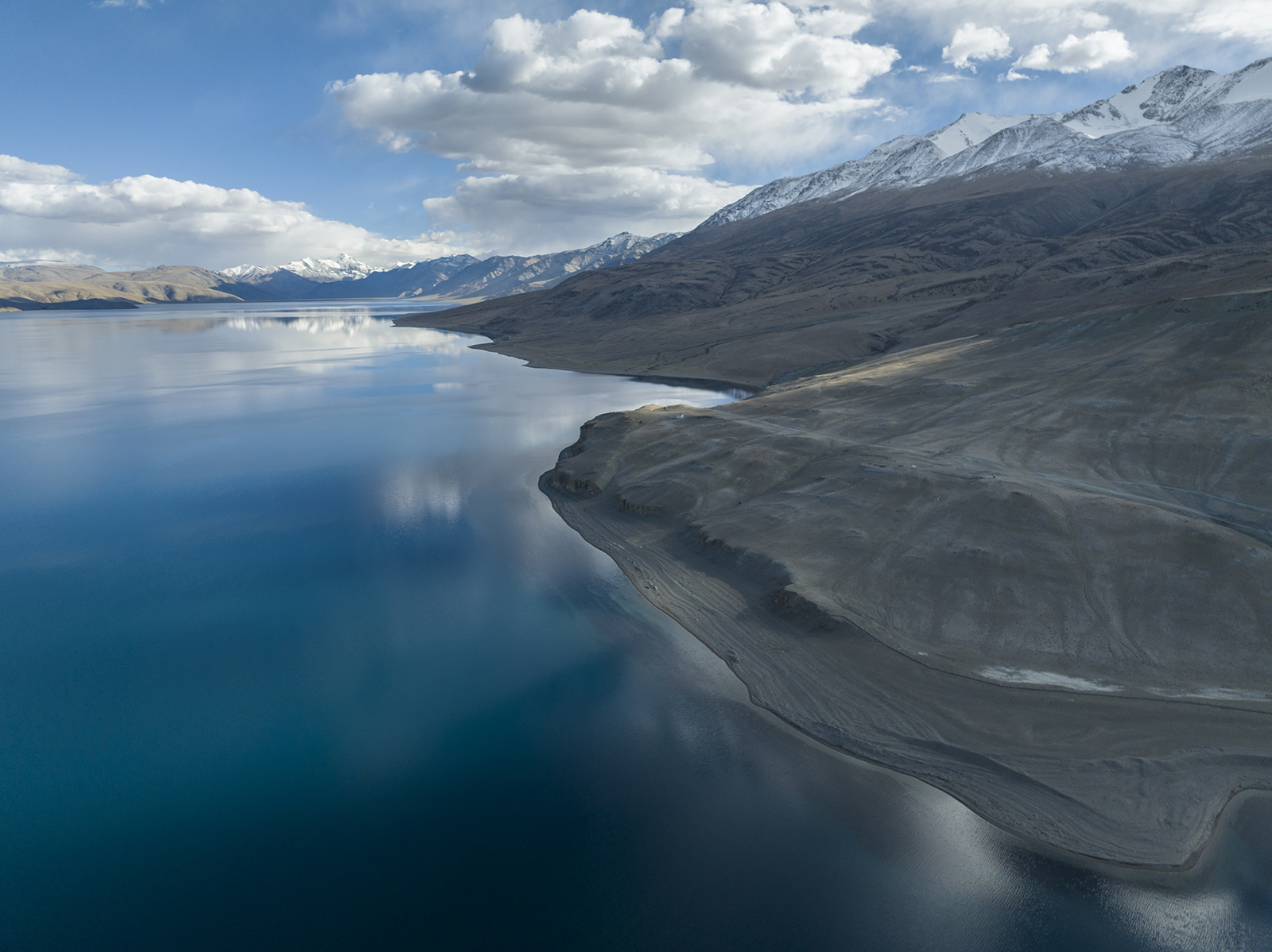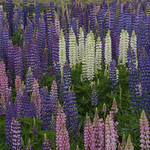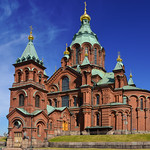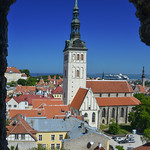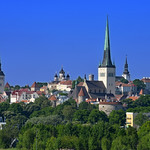The Sept 2022 trip to Leh Ladakh was on my bucket list from the time I was a medical student. Better late than never, finally got the chance to go this fabled land, and it did not disappoint.
Day 1: Leh
I took the morning flight from Delhi to Kolkata and with a short wait took a connecting flight to get to Leh. The flight into Leh airport is an experience in itself. I generally always choose the aisle seat because of leg room, but I am glad I got a window. The flight in over the Himalayan ranges is quite exhilarating. Remember that the wings do take up quite a large chunk of the plane, so seats right up front or at the back will give you the best views, and views are there from either side as the plane does a full circle coming into the airport. I was on the right side of the plane and the views of the mountains and arid topography were stellar.
On another note, when it comes to carrying a drone, India is a nightmare. You need to know the rules. The drone itself has to be carried in the checked in baggage, but the batteries have to be in your cabin baggage. I received a lot of grief in the Kolkata airport as I had not checked it in, and I had to check in my drone bag just by itself as security would not allow me to take it into the plane. Fortunately it arrived in one piece.
On arrival, checked into the hotel, I was feeling a bit breathless to begin with, had the magical salty tea and things settled. Had some lunch, rested a bit to stop the spinning head that stemmed from rushing up and down the stairs. Soon the driver was back for some local sight seeing.
First stop was Leh Palace.
In the early fifteenth century, Dragpa Bumdey, King of Ladakh, built the first fortifications in Leh as well as a small royal residence along a mountain ridge high above the town. The king also founded three Buddhist temples, two within the old town walls, and the other by the palace on the peak of Tsemo, a nearby mountain. At the turn of the seventeenth century, Leh became a royal capital of the Himalayan Kingdom of Ladakh, which at the time ruled over most of western Tibet. It was at this time that King Senge Namgyal built Leh Palace, also known as Lachen Palkar Palace.
The massive nine-story stone structure lies at the base of the Tsemo ridge and towers over the old town. It was designed in the Tibetan style that was later made famous by Potala Palace in Lhasa. King Senge Namgyal also constructed massive rammed earth walls around the original residential area of the old town. Lachen Palkar Palace was abandoned in the mid-nineteenth century after the royal family left Leh following the Dogra invasion. Despite years of decay, the historic character of Leh old town has remained largely intact.
Second stop was Shanti Stupa.
A magnificent white-dome monument, the Shanti Stupa in Leh is among the top places to visit in Leh. Located at an elevation of 11,841 feet above the sea level, it is a must-visit place for all those who seek peace and beauty. The views from this monument are surreal and one cannot miss the sight of mesmerizing sunset and sunrise.
Shanti Stupa holds a religious significance for the Buddhists as it holds the remnants of Buddha, which were consecrated by the 14th Dalai Lama. Nature lovers will enjoy the gorgeous views of Leh and the Changspa Village nearby. If you visit during the full moon night, you will be able to witness the naturally illuminated monument by moonlight.
So, if you have been looking for a getaway to obtain peace and offer prayers to God, Shanti Stupa is the perfect place to be.
Shanti Stupa was built by a Japanese Buddhist named Bhikshu Gyomyo Nakamura in 1991. The main objective to construct this was to mark the completion of 2500 years of Buddhism and also to promote world peace. This peace pagoda aims to spread peace, positivity, and the preaching of Buddha.
Third and final stop for the day was Leh Market
Leh Market is one of the busiest, most colourful places in Leh, where you can get everything imaginable- from groceries to clothes, jewellery to local street food. The Leh Market is a perfect representation of the culture of Leh- vibrant and colourful. The market comprises many stalls, stores and shops that are set up in quaint disarray, where you can navigate your way between the merchants and sellers to discover items worthy of purchase.
The market is divided by small lanes and bylanes, with sections dedicated to things such as handicrafts, spices, clothes, artefacts, food and souvenirs. One of the things that Leh Market is very famous for is its woollen clothing. The cold climate of Leh has led to a culture of creating beautiful, hand-woven woollens, which has become a popular local product of Leh.
Market’s central location also facilitates easy trips to several nearby attractions such as the Leh Palace, Jama Masjid, Shanti Stupa and much more. Whether you are looking for unique dry fruits, exquisitely hand-crafted Tibetan shawls, or simply looking forward to a good time, Leh Market is bound to fulfil all your expectations.
Day 2: Leh to Kargil
- Very poor weather, was in two minds whether to go to Kargil or not
- Weather started to clear around mid day, so a delayed start to the day
- Had lunch at Khalsi
- Went over Fatu la Pass
- Went over Namika la pass
- Arrived in Kargil in the evning
Day 3: Kargil to Drass To Leh
This was a long day. The weather was fantastic
- In the morning drove out to Drass to see the Kargil War Memorial – quite an emotional experience to see the memorials of all the people who passed away, would have been the same on both sides of the border
- Drove back to Kargil
- Went over Namika La, where had the opportunity to do a drone flight
- Did the same at Fatu la, but the weather began to deteriorate
- Reached Lamayaru, beautiful peaceful monaesty
- Ended the day with the hall of fame light and sound show
Day 5: Leh to Hunder
Another long driving day from Leh to Hunder going over the famous Khardungla paa
- Carried out a drone flight from a view point on the way to Khardungla from which the mountains that surround Leh looked stunning
- Reached Khardungla, spent about 20 minutes there, the air does get very thin and started to feel a bit ill, the view of the distant Karakoram ranges are breath taking
- Had lunch at Khalsa
- Arrived in Diskit in the afternoon, beautiful setting of Monastery and a massive statue of Buddha
- Ended the day with a camel ride over the sand dunes of Hunder, these are bactrian camels
Monaestry at Diskit
Day 5: Hunder to Turtuk, Thangtsi
Journey to the last village before the line of control, 0 point and then to Turtuk
Day 6: Hunder to Pangong Tso
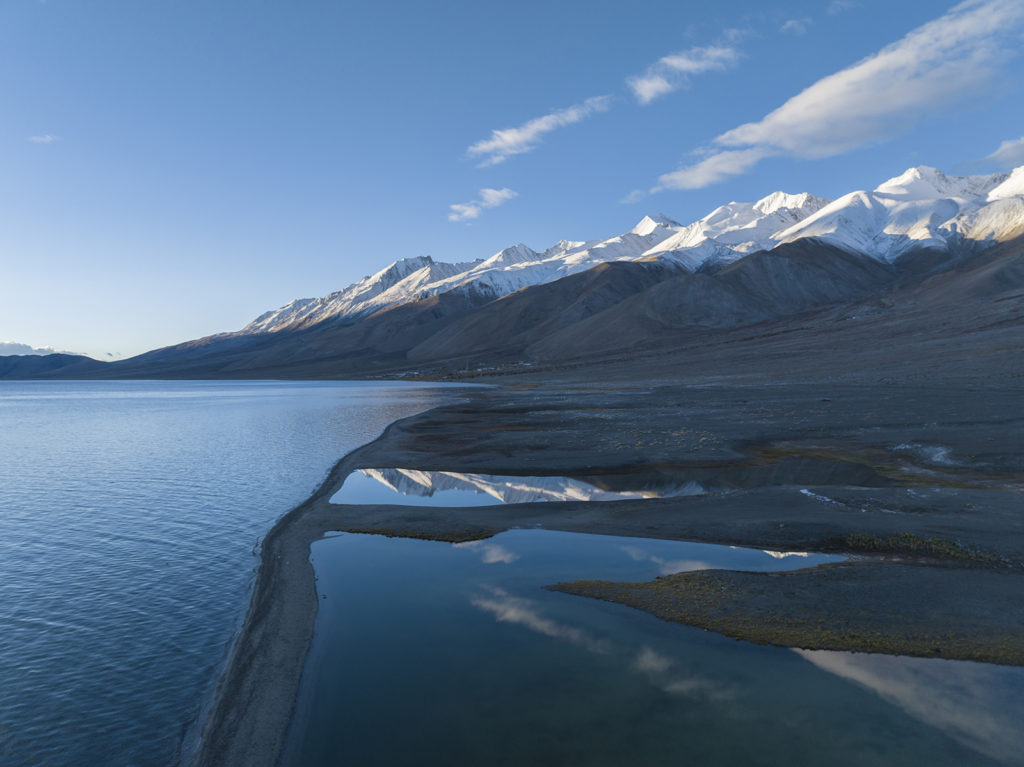
Again another wet day with poor visibility
Zeshan had to leave
Pangong looked quite disappoining to begin with
India Australia 20-20 match watched with the locals and drivers
Very cold night
Day 7: Pangong Tso to Tso Moriri
Exhilirating morning shoot at Pangong and then journey to Tso Moriri
The previous evening when I arrived at Pangong Tso, I had been quite disappointed as this was meant to be the highlight of my trip and it was overcast and grim and the fabled blues of Pangong were no where to be seen. Next morning though it was a different story all together. The sun as it rose struck the snowy peaks around Pangong turning them golden. Pretty amazing sight, it has to be seen to be believed. I was happily flying my drone, capturing the beauty of the lake and the different shades of blue till another tourist decided to come up with his motor bike right up to the edge of the lake (which is not allowed), waking up security and that was the end of my morning flight, oh well!!! but I did get to watch something pretty amazing and Pangong did not disappoint, the fabled ever changing blues are not a myth, that’s how the waters of this highest salt water lake in the world rolls. Must see…
After breakfast, I was joined by a new driver as Zeshan had left the night before, he was called Dawa. We started the long drive to Tso Moriri, tracing Pangong Tso along the way. Got the opportunity to do another drone flight from an isolated spot and it was 10 am so the blues were completely different.
We finally said goodbye to Pangong Tso and took the road towards Thato la. The switchbacks and the climb was exhilarating. Just on the other side of Thato la is Mirpal Tso, another beautiful salt lake, so another drone flight. The aerial view of the ascending road to Thato la amidst the stark arid landscape is hard to beat. Also saw Kiangs (wild ass) on the ascent up.
After Thato la comes a higher pass Kaksang la, hower the ascent is not as dramatic as you are already quite high up, however your lungs can tell that this is pretty high up as after 10-15 minutes I started feeling a bit light headed. Doing what I was doing, i.e. running about trying to capture the beauty of the pass on the DSLR is not recommended lol. A drone flight is easer on the oxygen consumption.
After a couple of hours the road becomes unsealed and every part of your body gets shaken up. There are two more lakes that you pass on the way, beautiful in their own right, Yaye Tso and Kyagar Tso. And finally Tso Moriri, a very sensitive area from a military point of view. We still managed to get away to an isolated spot to capture the beauty of this magical lake as the sun set. Quite an mazing experience to see the surrounding peaks capture the light of the setting sun as the shepherds were walking their sheep back. Not sure which is more beautiful Pangong Tso or Tso Moriri, both are beautiful in their own right.
Day 8: Tso Moriri to Leh
Woke up early morning to capture the sunrise from my hotel window. Quite a sight to see the sun rise and wake up the region with live stock starting the day going out into the pastures. I knew my trip was drawing to an end, so there was an element of sadness, also I knew there was a long journey on an unsealed road ahead which I was not looking forward to, I did know though, sealed or unsealed it was going to be stunning as there were some lakes that we were going to pass.
The first was Kyagar Tso, the one we had passed yesterday everning but we did not stop as the light was in the opposite direct and did not want to miss the sun set over Tso Moriri.
We went through the hot springs at Puga and also saw Tso Kar and its salt deposits which provides the salt for the nomadic tribes around this part of Ladakh. Then the ascent to Taglang La, thats pretty spectacular as well and the road is being resurfaced, so in a year the unsealed road will be gone making Tso Moriri much more accessible. The road joins the main Manali Leh highway and goes over Taglanga La, heading into Leh.
Once closer to Leh, it was time to go to the Monasteries, starting with Hemis and then Thiksey. In between made a short photo stop to take images of Stakna Monastery too and after Thiksey, a quick stop at Shey Palace and then finally to Leh Market.
I had already located the Thanka shop where I would wear my wares on the final night of my stay, fortunately this time it was open. It was more a museum than a shop and I was very happy with my purchase.
Day 9: Leh to Kolkata
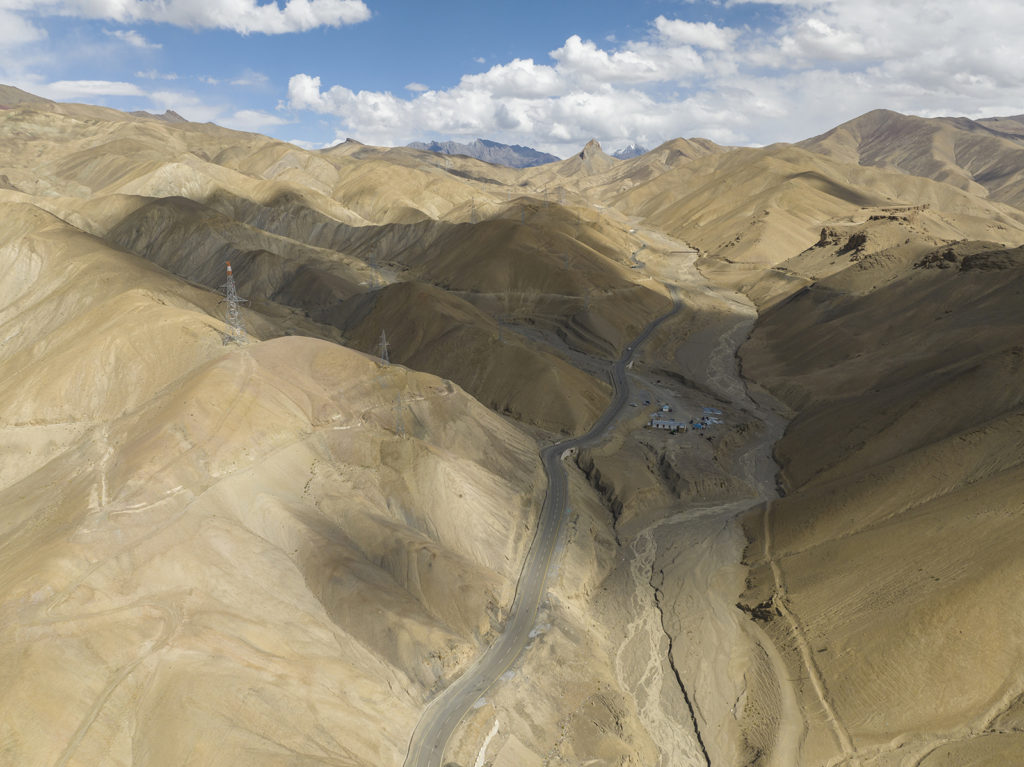
On the final morning I did not do much, was all packed up for my drop off to the airport and then from Leh to Delhi and Delhi to Kolkata, ready for the next adventure, Durga Puja, which was about to get started in a few days.
